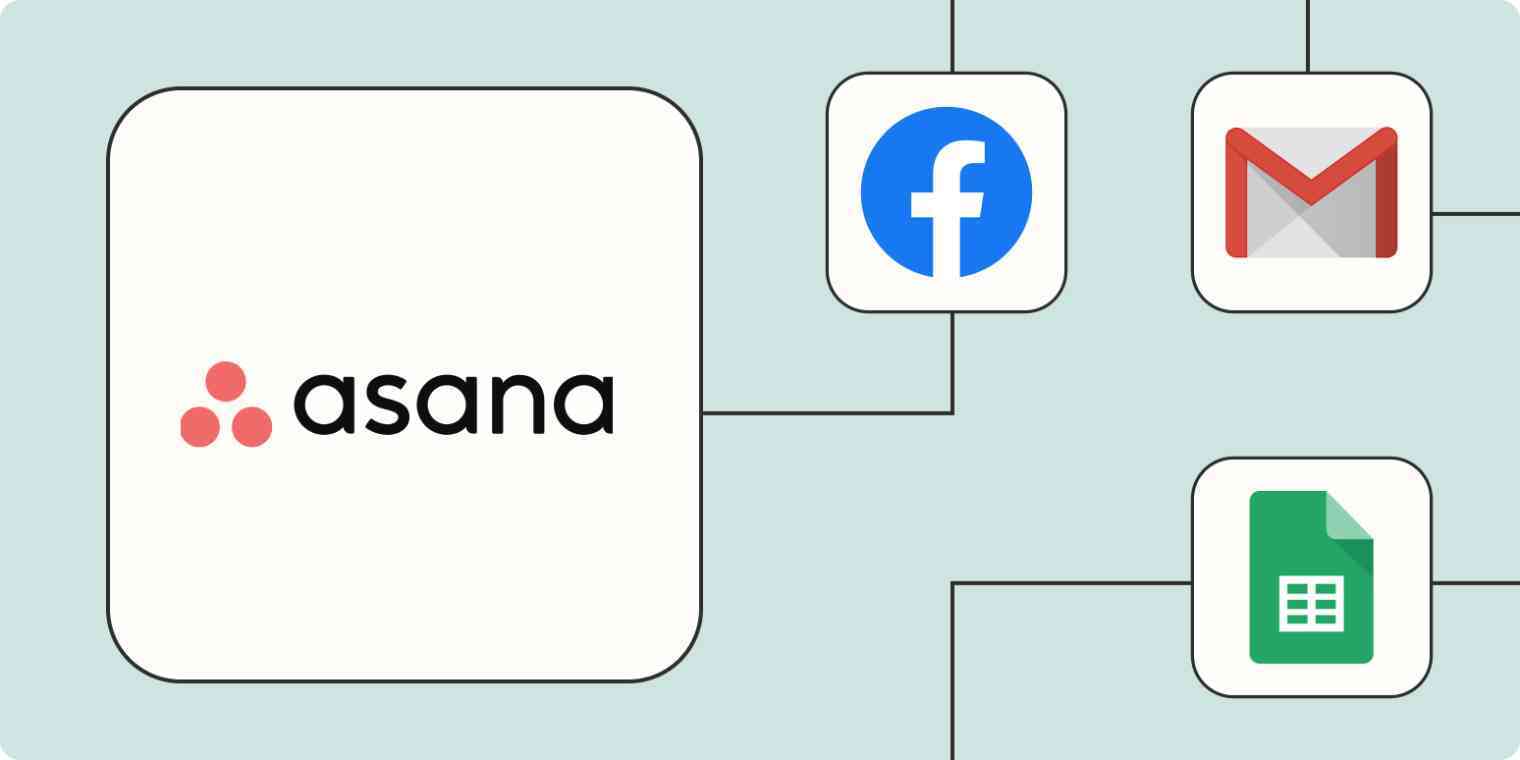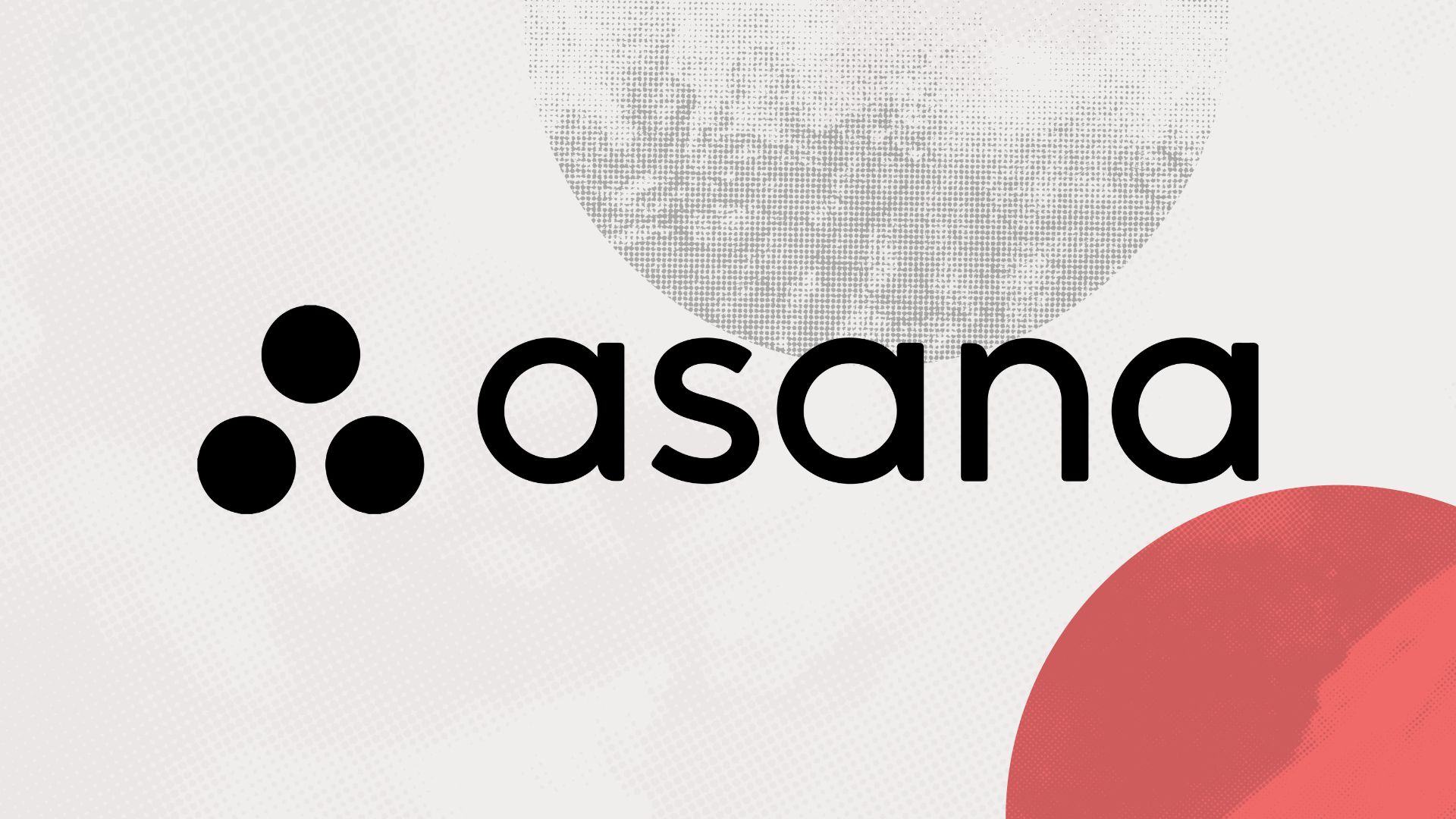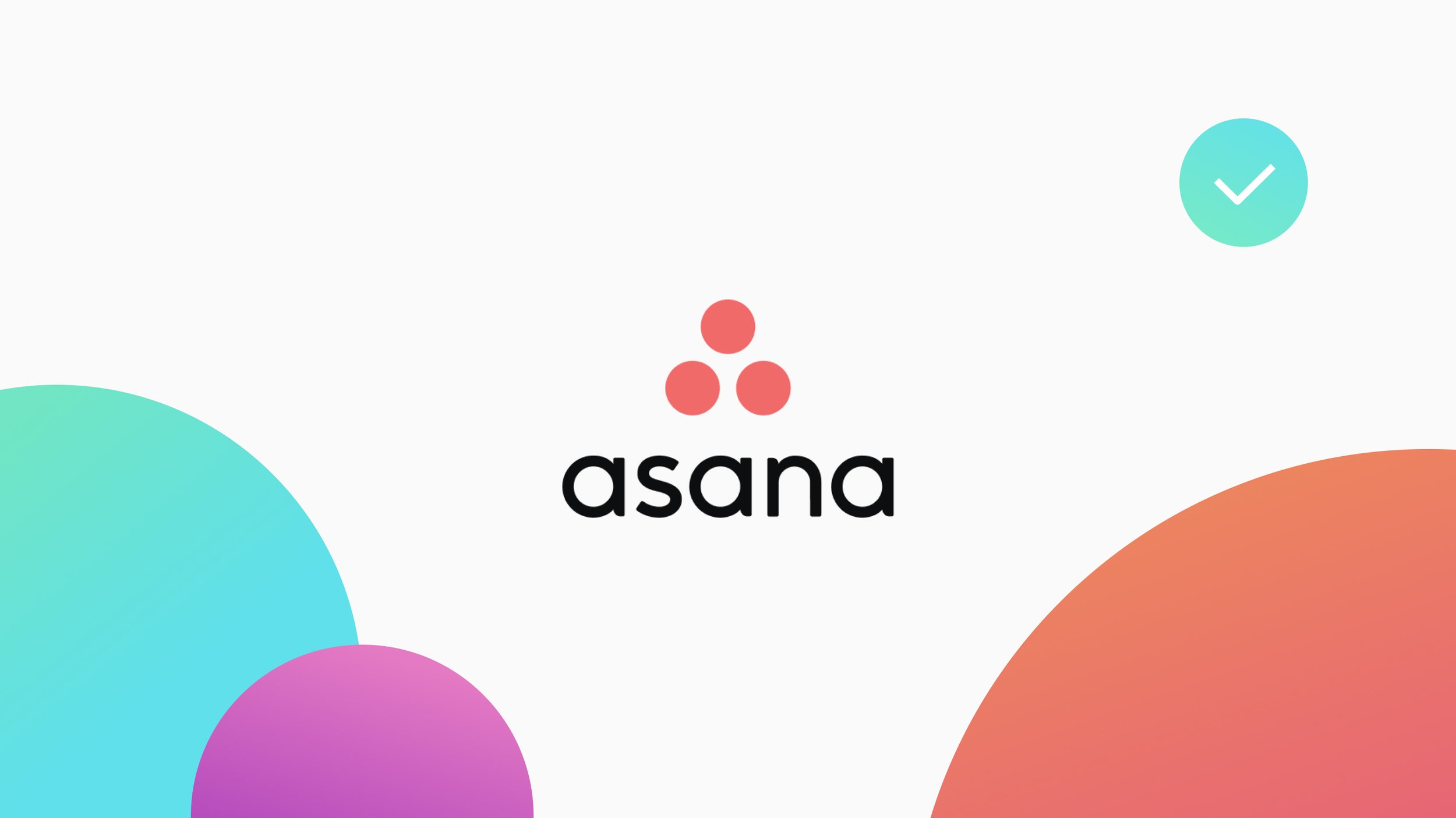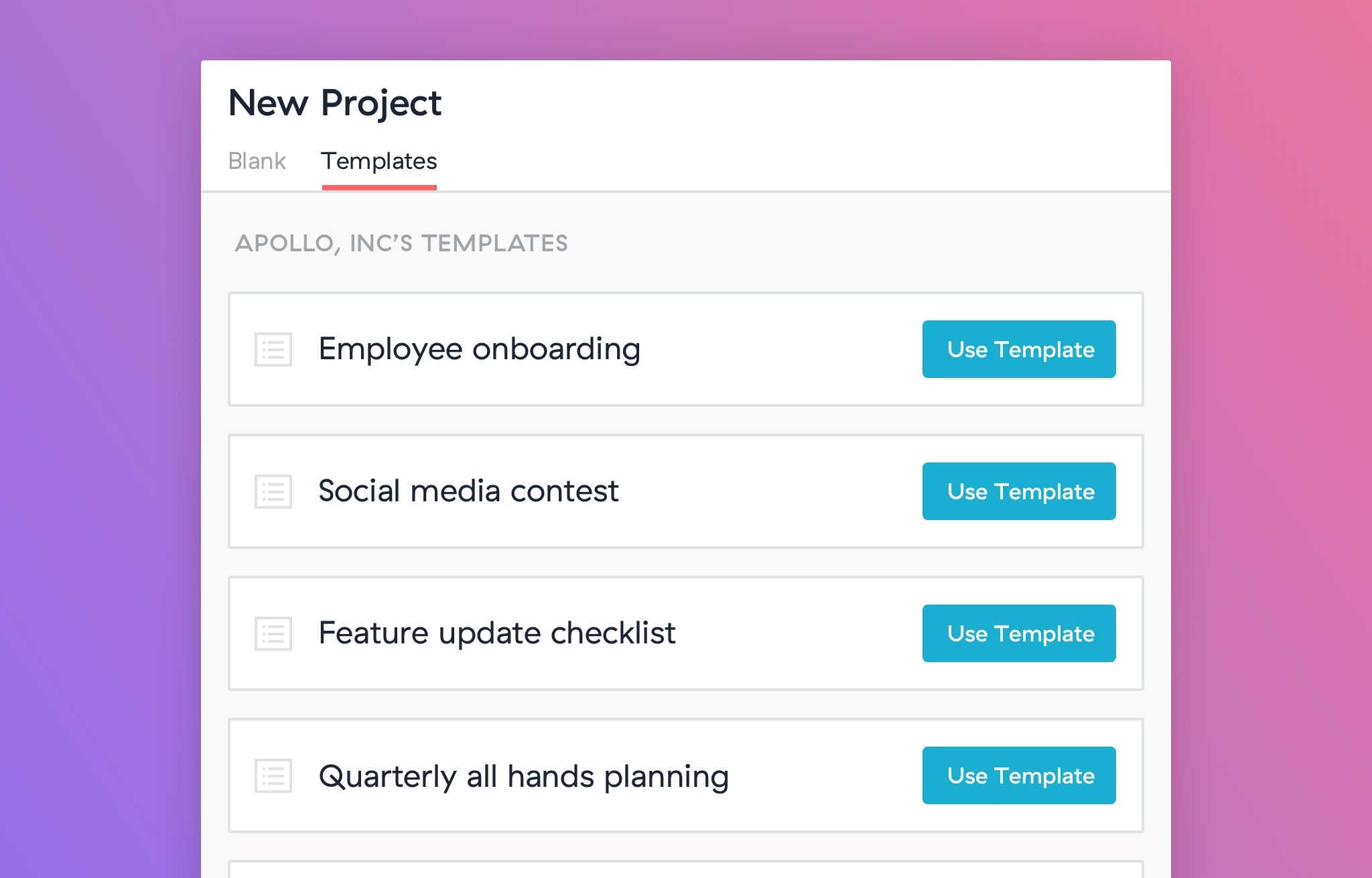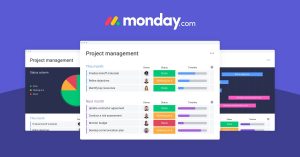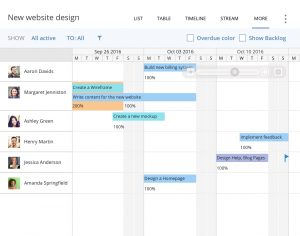Introduction
Asana is a highly popular project management tool that helps teams stay organized and collaborate effectively. With its user-friendly interface and extensive features, businesses of all sizes can streamline their workflows and boost productivity. Asana’s versatility and scalability have attracted numerous companies across various industries to adopt it as their go-to project management solution.
This article explores the benefits of using Asana and highlights some notable companies that rely on this platform for their project management needs. By examining how these companies leverage Asana to achieve their goals, we can gain insights into the practical applications and advantages of this powerful tool.
Whether you’re a small startup or a large enterprise, Asana provides a robust platform that empowers your team to collaborate seamlessly, prioritize tasks, and achieve project milestones with ease. By centralizing communication, task assignments, and progress tracking, Asana eliminates the need for scattered emails, multiple spreadsheets, and endless meetings, allowing your team to focus on what matters most – getting work done.
From enhancing individual productivity to promoting efficient teamwork, Asana offers a range of features that cater to the diverse needs of different industries. Its flexibility ensures that it can be tailored to fit your unique project management requirements, providing a centralized hub where you can plan, execute, and track projects from start to finish.
Now, let’s delve into the specific benefits of using Asana for project management and explore some of the companies that have chosen to rely on this versatile tool for their day-to-day operations.
Asana: A Brief Overview
Asana is a cloud-based project management software founded in 2008 by Dustin Moskovitz, one of the co-founders of Facebook, along with Justin Rosenstein. It quickly gained popularity for its intuitive interface and powerful features that simplify project management for teams of all sizes.
At its core, Asana is designed to help teams collaborate effectively, stay organized, and improve workflow efficiency. The platform offers a wide range of features that facilitate task management, communication, and progress tracking, allowing teams to centralize their work in one place.
Key features that make Asana stand out include:
Task Management: Asana allows users to create tasks, assign them to team members, set due dates, and add relevant attachments and notes. Tasks can be organized into different projects or grouped into specific categories, making it easy to keep track of progress and manage workloads.
Workflow Automation: Asana offers automation capabilities through its “Rules” feature. With Rules, you can automate repetitive tasks, set up notifications, and create triggers based on specific actions or changes within the project. This helps streamline workflows and eliminates manual effort in managing routine tasks.
Collaboration: Asana enables seamless collaboration among team members through comments, discussions, and file sharing. Everyone involved in a project can easily communicate, offer feedback, and share updates within the context of each task. This promotes transparency and keeps everyone aligned and informed.
Project Tracking: Asana provides visual project tracking tools, such as Kanban boards, Gantt charts, and progress dashboards. These features allow teams to monitor project timelines, visualize dependencies, and gain insights into project status, making it easier to identify bottlenecks and take corrective actions.
Asana integrates with other popular productivity tools, such as Google Drive, Dropbox, Slack, and Microsoft Office, enabling seamless collaboration across different platforms. The platform also offers a robust API that allows for custom integrations and automation with other software applications.
With its user-friendly interface, powerful features, and extensive customization options, Asana has become a trusted project management tool for businesses in various industries. It helps teams improve their productivity, streamline their processes, and ultimately deliver projects on time and within budget.
Benefits of Using Asana for Project Management
Using Asana as your project management tool offers a multitude of benefits that can significantly improve your team’s productivity and efficiency. Here are some key advantages:
1. Enhanced Collaboration: Asana provides a centralized platform where team members can collaborate in real-time. The ability to assign tasks, share files, and have discussions in one place eliminates the need for back-and-forth emails and promotes seamless communication.
2. Improved Task Management: Asana’s intuitive interface allows you to create tasks, assign due dates, set priorities, and track progress effortlessly. With clear task assignments and deadlines, team members can stay focused on their responsibilities and have a better understanding of project goals.
3. Streamlined Workflows: Asana’s automation features help streamline repetitive tasks and workflows. By setting up rules and triggers, you can automate notifications, recurring tasks, and project updates, reducing manual effort and saving time for more important work.
4. Visual Project Tracking: Asana offers visual project tracking tools like Kanban boards, Gantt charts, and progress dashboards. These features provide a clear overview of project timelines, dependencies, and milestones, making it easier to monitor progress, identify potential roadblocks, and adjust plans accordingly.
5. Increased Accountability: Asana allows team members to see who is responsible for each task and track their progress. This promotes accountability and ensures that everyone is aware of their responsibilities and deadlines, fostering a culture of transparency and ownership.
6. Flexibility and Customization: Asana offers a wide range of customization options to fit your team’s unique workflow. You can create custom fields, templates, and project structures that align with your specific requirements, allowing you to adapt Asana to your team’s needs.
7. Seamless Integration: Asana integrates with numerous third-party applications, such as Google Drive, Dropbox, and Slack, enabling seamless collaboration across platforms. These integrations provide a unified workspace where you can access all relevant files, documents, and conversations in one place.
8. Mobile Accessibility: Asana’s mobile app allows you to manage projects and tasks on the go. You can stay connected with your team, receive notifications, and update tasks from your mobile device, ensuring that work doesn’t stop even when you’re away from your desk.
9. Scalability: As your business grows, Asana can scale with you. Whether you have a small team or a large organization, Asana offers the flexibility to accommodate your changing needs and can handle projects of any size and complexity.
10. Data-driven Insights: Asana provides valuable analytics and reporting features that offer insights into project performance, team productivity, and resource allocation. These insights empower you to make data-driven decisions, identify areas for improvement, and optimize your team’s performance.
In summary, Asana’s collaboration, task management, automation, and tracking features provide numerous benefits for project management. By implementing Asana, you can streamline your workflows, improve communication, enhance productivity, and ultimately deliver successful projects.
Companies that Use Asana
Asana is trusted by a wide range of companies across different industries, from startups to Fortune 500 companies. Let’s take a look at some notable companies that have chosen Asana as their preferred project management solution:
- Airbnb: The global hospitality platform, Airbnb, relies on Asana to manage its projects and streamline its operations. With teams spread across multiple locations, Asana helps Airbnb centralize communication, assign tasks, and track progress, ensuring seamless collaboration and efficient project execution.
- Spotify: The popular music streaming platform, Spotify, utilizes Asana to manage their complex projects and keep their large teams aligned. Asana’s dynamic features and visual project tracking tools help Spotify stay organized, prioritize tasks, and deliver music updates and new features to their millions of users.
- Uber: Uber, the ride-sharing giant, relies on Asana to coordinate its projects and improve operational efficiency. Asana enables Uber to plan and manage driver-partner onboarding, app updates, and other critical tasks, ensuring smooth operations and seamless user experiences worldwide.
- Pinterest: Pinterest, the visual discovery platform, utilizes Asana to manage its diverse range of projects and initiatives. Asana’s collaboration features and project tracking tools help Pinterest’s teams seamlessly plan and execute projects, ensuring that new features and enhancements are delivered to millions of users around the world.
- Slack: Asana is even used by Slack, the popular team communication and collaboration tool. Asana helps Slack manage its internal projects, product updates, and customer support initiatives. By using Asana, Slack can keep its teams on track, improve cross-functional collaboration, and deliver quality updates to its platform.
- Dropbox: Dropbox, the cloud storage and file-sharing platform, relies on Asana to streamline its project management processes. Asana’s task management and automation features help Dropbox’s teams coordinate product updates, marketing campaigns, and customer support initiatives, ensuring smooth execution and timely delivery.
- TED: The well-known media organization, TED, uses Asana to manage its wide range of projects, including TED Talks, conferences, and global initiatives. Asana’s flexibility and collaboration capabilities help TED’s teams stay organized, coordinate tasks, and bring insightful ideas to audiences worldwide.
- Zappos: Zappos, the online footwear and clothing retailer, relies on Asana to enhance its project management capabilities and improve cross-team communication. Asana helps Zappos track product launches, marketing campaigns, and internal initiatives, ensuring that deadlines are met and customer satisfaction is prioritized.
- Lyft: Lyft, the popular ride-sharing service, utilizes Asana to manage its numerous projects and coordinate its teams across different locations. Asana’s features enable Lyft to assign and track tasks, ensuring efficient collaboration among its diverse teams and consistent service delivery to riders and drivers.
- Stripe: Stripe, the online payments company, relies on Asana to manage its projects and streamline its operational processes. Asana’s automation features help Stripe automate repetitive tasks and ensure smooth project execution, allowing the company to focus on providing excellent payment solutions to their customers.
These companies represent just a fraction of the many businesses that utilize Asana’s powerful project management capabilities. From global enterprises to innovative startups, Asana continues to be a trusted tool to streamline workflows, enhance collaboration, and drive successful project outcomes.
Airbnb
Airbnb, the global hospitality platform, relies on Asana to efficiently manage its projects and streamline its operations. As a company with teams spread across multiple locations, Airbnb needed a centralized project management solution that could facilitate seamless collaboration and effective task management. Asana provided the perfect solution.
By using Asana, Airbnb can easily centralize communication, assign tasks, and track progress, no matter where their teams are located. Asana’s user-friendly interface allows for intuitive task creation, assignment, and prioritization, ensuring that everyone is clear on their responsibilities and deadlines.
Airbnb utilizes the various features of Asana to manage their diverse range of projects, from marketing campaigns to product development and operational improvements. With Asana’s automation capabilities, certain repetitive tasks can be easily automated, saving time and effort for the teams involved. These automation features also allow for efficient notifications and updates, ensuring that everyone is kept informed about project status and changes.
One of the key benefits Airbnb experiences with Asana is improved collaboration. Asana provides a centralized platform where team members can easily communicate, share files, and have discussions within the context of each task. This eliminates the need for scattered emails or separate communication channels, allowing for streamlined collaboration and efficient decision-making.
Moreover, Asana’s visual project tracking tools, such as Kanban boards and progress dashboards, allow Airbnb to monitor project timelines and gain insights into overall progress. This helps Airbnb identify potential bottlenecks, adjust plans accordingly, and ensure projects are delivered on time.
Asana’s flexibility and customization options also align well with Airbnb’s evolving needs. Whether it’s creating custom fields and templates or adapting Asana to fit their unique project management processes, Airbnb can tailor Asana to suit their specific requirements.
By leveraging the power of Asana, Airbnb has been able to streamline their project management processes, enhance collaboration, and improve overall operational efficiency. With a centralized hub for communication, task assignment, and progress tracking, Airbnb’s teams can focus on delivering exceptional experiences to their hosts and guests around the world.
Spotify
Spotify, the popular music streaming platform, relies on Asana to effectively manage their complex projects and keep their large, cross-functional teams aligned. As a company that constantly evolves its music catalog and adds new features, Spotify needed a robust project management solution that could handle their intricate workflows and foster seamless collaboration. Asana proved to be the perfect fit.
Asana’s dynamic features and visual project tracking tools have allowed Spotify to stay organized and prioritize tasks effectively. Spotify’s teams can create tasks within Asana, assign them to the appropriate team members, and set due dates. This ensures clear ownership and accountability for each task, helping to keep projects on track.
With Asana, Spotify can seamlessly coordinate and execute their various projects, such as rolling out music updates, launching new features, and managing customer support initiatives. Asana’s collaboration capabilities have been crucial in bringing teams together, regardless of their location or department. Team members can easily communicate, share files, and provide feedback within the context of each task in Asana, fostering transparency and promoting efficient collaboration.
One of the key benefits Spotify experiences with Asana is the ability to track project progress visually. Asana’s Kanban boards and progress dashboards allow Spotify to visualize the status of each task, easily identify bottlenecks, and adjust plans accordingly. This provides teams with a clear overview of the project’s progress, ensuring that everyone is aligned and aware of any potential roadblocks.
Additionally, Asana’s automation features have helped Spotify streamline their workflows by automating repetitive tasks. This allows team members to focus on more value-added work while minimizing the manual effort required for routine tasks. Notifications and updates can also be automated, keeping teams in the loop and ensuring timely communication.
As a company that operates globally, Spotify appreciates Asana’s mobile accessibility. The Asana mobile app allows Spotify’s teams to manage projects and tasks on the go, ensuring that important updates and actions can be taken even when team members are away from their desks.
With Asana’s scalability, Spotify can easily adapt as the company grows and takes on more ambitious projects. As the music streaming platform expands its features and user base, Asana offers flexibility to accommodate Spotify’s evolving needs and ensures efficient project management at any scale.
By leveraging Asana, Spotify has been able to improve cross-functional collaboration, streamline their project management processes, and stay at the forefront of the competitive music streaming industry. Asana continues to play a crucial role in helping Spotify deliver high-quality music experiences to millions of users worldwide.
Uber
Uber, the renowned ride-sharing giant, relies on Asana to efficiently coordinate and manage their wide range of projects. With operations spanning across multiple cities and countries, Uber needed a centralized project management solution that could streamline their processes and improve operational efficiency. Asana proved to be the ideal tool for their project management needs.
By utilizing Asana, Uber can effectively plan and manage various projects, including driver-partner onboarding, app updates, and customer support initiatives. With Asana’s intuitive task management features, Uber’s teams can create and assign tasks, set priorities, and track progress seamlessly. This allows for better coordination and ensures that projects are executed smoothly.
Asana’s collaboration features have been instrumental in Uber’s success. With teams dispersed across different locations, Asana provides a centralized space for team members to communicate, share files, and provide updates. This eliminates the need for lengthy email threads and promotes seamless collaboration, allowing Uber’s teams to work together efficiently and make real-time decisions.
One of the key benefits Uber experiences with Asana is the visual project tracking capability. Asana’s Kanban boards and progress dashboards provide a clear overview of each project’s status, enabling Uber to monitor project timelines and stay on top of delivery milestones. This helps Uber identify potential roadblocks and take appropriate actions to ensure timely project completion.
Asana’s automation features have also been valuable for Uber, enabling them to streamline repetitive tasks and reduce manual effort. By setting up rules and triggers in Asana, Uber can automate notifications and updates, ensuring that team members are always aware of project changes and deadlines. This automation saves time and increases efficiency, allowing Uber’s teams to focus on higher-value activities.
In a fast-paced environment like Uber, access to project information on the go is crucial. Asana’s mobile app enables Uber’s teams to manage projects and tasks from anywhere, ensuring that important updates and actions can be addressed promptly. This flexibility contributes to the overall agility and responsiveness of Uber’s operations.
As Uber continues to grow and expand its services globally, Asana’s scalability is a valuable asset. Asana can easily accommodate the increasing complexity and volume of Uber’s projects, ensuring that the platform remains a reliable tool for effective project management.
By leveraging Asana’s capabilities, Uber has been able to improve their project management processes, enhance collaboration, and drive operational efficiency. Asana plays a crucial role in helping Uber deliver exceptional ride-sharing services to millions of users worldwide, contributing to their success as a leading transportation platform.
Pinterest, the visual discovery platform, relies on Asana to effectively manage their diverse range of projects and initiatives. With a constant stream of updates and new features being rolled out, Pinterest needed a project management solution that could handle their dynamic workflows and keep teams aligned. Asana proved to be the perfect tool for their project management needs.
Asana’s intuitive interface and task management features have been crucial in helping Pinterest stay organized and prioritize tasks. Pinterest’s teams can create tasks within Asana, assign them to team members, set due dates, and add relevant details. This ensures clear ownership and accountability for each task, facilitating seamless collaboration and efficient project execution.
Asana’s collaboration capabilities have allowed Pinterest’s teams to work together seamlessly, regardless of their location or department. Asana provides a centralized platform for team members to communicate, share files, and provide feedback within the context of each task. This eliminates the need for scattered emails and improves collaboration efficiency.
One of the key benefits Pinterest experiences with Asana is the ability to visualize project progress. Asana’s Kanban boards and progress dashboards help Pinterest’s teams track the status of each task and gain insights into overall project progress. This provides a clear overview of the project’s status, making it easier to identify any bottlenecks or areas that require adjustment.
Moreover, Asana’s automation features have helped Pinterest streamline their project workflows. By automating repetitive tasks and setting up rules and triggers, Pinterest can reduce manual effort and save time. This allows team members to focus on more valuable work and ensures that routine tasks are completed efficiently.
As Pinterest continues to innovate and roll out new features, Asana’s scalability has proven valuable. Asana can easily accommodate Pinterest’s evolving needs as the company grows, allowing for smooth project management at any scale.
Accessibility is also key for Pinterest, and Asana’s mobile app enables teams to manage projects and tasks on the go. Whether they’re in the office or out in the field, team members can stay connected, receive notifications, and update tasks from their mobile devices, ensuring that work continues seamlessly.
By utilizing Asana, Pinterest has been able to streamline their project management processes, enhance collaboration, and efficiently deliver new features and enhancements to their millions of users. Asana continues to play a vital role in supporting Pinterest’s vision of providing users with a visually inspiring and engaging platform.
Slack
Asana is even used by Slack, the popular team communication and collaboration tool, to streamline their internal project management processes. Slack relies on Asana to coordinate and manage their various projects and initiatives effectively.
Asana’s features enable Slack to improve cross-functional collaboration and increase overall efficiency. With Asana’s user-friendly interface, Slack’s teams can easily create tasks, assign them to team members, and set due dates. This ensures that everyone is clear on their responsibilities and deadlines.
Asana’s collaboration capabilities have been crucial in helping Slack’s teams work together seamlessly. With Asana, team members can comment on tasks, share files, and provide updates within the context of each project. This centralizes communication and promotes transparency, making it easier for teams to collaborate and make informed decisions.
Slack benefits from Asana’s visual project tracking tools, such as Kanban boards and progress dashboards. These features provide a clear overview of project statuses, allowing Slack to monitor progress, identify bottlenecks, and take necessary actions to keep projects on track. This visibility ensures that projects are completed in a timely manner and within budget.
One of the key advantages of using Asana for Slack is the automation capabilities it provides. Asana enables Slack to automate repetitive tasks, set up notifications, and streamline workflows. This saves time and reduces manual effort, allowing team members to focus on more high-impact work.
Furthermore, Asana’s integration with Slack’s communication platform enhances productivity for Slack’s teams. Asana tasks, updates, and notifications can be easily shared within Slack channels, eliminating the need to switch between tools and ensuring everyone stays informed in real-time.
Slack appreciates Asana’s flexibility and customization options. Asana allows Slack to create custom fields, templates, and workflows that align with their specific project management needs. This adaptability ensures that Asana serves as a tailored solution for Slack’s unique requirements.
Asana’s scalability is also advantageous to Slack. As Slack grows as a company, Asana can scale with them, accommodating the increasing complexity and volume of their projects while maintaining high levels of efficiency and organization.
By leveraging Asana, Slack has been able to improve cross-functional collaboration, streamline project management processes, and enhance overall productivity. Asana continues to play a crucial role in helping Slack deliver its mission of bringing teams together and improving workplace communication and productivity.
Dropbox
Dropbox, the popular cloud storage and file-sharing platform, relies on Asana to enhance their project management capabilities and streamline their operations. With a diverse range of projects and initiatives to manage, Dropbox needed a robust project management solution that could handle their complex workflows. Asana proved to be the perfect fit.
Asana’s task management features have been instrumental in helping Dropbox stay organized and prioritize tasks effectively. Dropbox’s teams can create tasks within Asana, assign them to team members, and set due dates. This ensures clear ownership and accountability, allowing teams to collaborate more seamlessly and deliver projects on time.
One of the key benefits of using Asana for Dropbox is the enhanced collaboration it enables. With Asana, team members can easily communicate, share files, and provide feedback within the context of each task. This centralized platform promotes transparency and fosters efficient collaboration, eliminating the need for scattered emails or separate communication channels.
Asana’s visual project tracking tools, including Kanban boards and progress dashboards, have also been valuable to Dropbox. These features allow Dropbox to visualize project timelines, monitor progress, and gain insights into overall project status. This helps to identify potential roadblocks and ensure that projects stay on track.
Dropbox leverages Asana’s automation features to streamline their project workflows. By automating repetitive tasks and setting up rules and triggers, Dropbox reduces manual effort and saves time. This automation frees up team members to focus on more valuable work, facilitating smoother project execution.
Integration is key for Dropbox, and Asana’s integration capabilities are highly valuable. Asana integrates seamlessly with Dropbox, allowing teams to access and share files directly within Asana. This synchronization between the two platforms makes it easy to manage project-related documents and ensures that everyone has up-to-date information.
Dropbox appreciates Asana’s flexibility and customization options. Asana allows Dropbox to create custom fields, templates, and workflows that align with their specific project management needs. This adaptability ensures that Asana is tailored to fit Dropbox’s unique requirements and enhances their overall project management processes.
As Dropbox continues to grow and evolve its services, Asana’s scalability is a significant advantage. Asana can easily handle the increasing complexity and volume of Dropbox’s projects while maintaining high levels of efficiency and organization.
By leveraging Asana, Dropbox has been able to streamline their project management processes, enhance collaboration, and improve overall operational efficiency. Asana continues to play a vital role in supporting Dropbox’s mission of simplifying the way people work and helping teams stay organized.
TED
TED, the well-known media organization, relies on Asana to efficiently manage their wide range of projects, including TED Talks, conferences, and global initiatives. With their mission of spreading ideas and inspiring people, TED needed a project management tool that could handle their diverse projects and facilitate seamless collaboration. Asana proved to be a valuable asset to their project management processes.
Asana’s features and capabilities have been instrumental in helping TED stay organized and effectively manage their projects. TED’s teams can create tasks within Asana, assign them to team members, and set due dates. This allows for clear ownership and accountability, ensuring that all tasks are adequately managed.
Collaboration plays a vital role in TED’s success, and Asana provides a centralized platform for team members to communicate, share files, and provide updates. TED’s teams can easily comment on tasks, exchange ideas, and iterate on projects within Asana. This ensures that all team members stay informed and aligned, creating a culture of efficient collaboration.
One of the key benefits TED experiences with Asana is the ability to track projects visually. Asana’s Kanban boards and progress dashboards provide a clear overview of project statuses, allowing TED to monitor progress and identify any bottlenecks. This visual representation helps TED ensure that projects stay on track and are delivered successfully.
Moreover, Asana’s automation features have helped TED streamline their project workflows. TED can automate tasks and set rules and triggers to ensure that process steps are followed consistently. This automation saves time, minimizes errors, and allows team members to focus on more strategic and creative aspects of their projects.
Asana’s flexibility and customization options have also been valuable to TED. Asana allows TED to tailor the platform to their specific needs by creating custom fields, templates, and project structures. This adaptability ensures that Asana aligns perfectly with TED’s unique project management requirements.
As TED operates globally, access to project information on the go is crucial. Asana’s mobile app enables TED’s teams to manage projects and tasks from anywhere, ensuring that they can stay connected and address important updates, regardless of their location.
Asana’s scalability is also advantageous for TED as they continue to expand and manage larger-scale projects. Asana can easily handle the increasing complexity and volume of TED’s projects, providing the necessary support for their continued growth.
By leveraging Asana, TED has been able to streamline their project management processes, enhance collaboration, and successfully execute their initiatives. Asana continues to play a crucial role in helping TED inspire and educate audiences worldwide through their thought-provoking talks and events.
Zappos
Zappos, the renowned online footwear and clothing retailer, relies on Asana to enhance their project management capabilities and improve cross-team communication. With a focus on delivering exceptional customer service, Zappos needed a project management tool that could streamline their processes and provide transparency across different teams. Asana proved to be the ideal solution for their project management needs.
With Asana, Zappos can effectively track and manage a wide range of projects, including product launches, marketing campaigns, and internal initiatives. Asana’s task management features allow Zappos teams to create tasks, assign them to team members, and set due dates. This ensures clear ownership and accountability, helping teams stay on track with their responsibilities.
Asana’s collaboration capabilities have enabled Zappos to improve cross-team communication and promote transparency. Team members can easily collaborate and discuss project-related tasks and updates within Asana, eliminating the need for separate communication channels. This centralized platform ensures that everyone remains aligned and informed about project progress.
Zappos benefits from Asana’s visual project tracking tools such as Kanban boards and progress dashboards. These features allow Zappos to monitor project timelines, track progress, and quickly identify any potential bottlenecks. This visibility helps teams make informed decisions and take necessary actions to keep projects moving forward.
Asana’s automation features have helped streamline Zappos’ workflows and improve efficiency. Zappos can automate repetitive tasks and set up notifications and reminders through Asana’s rules. This automation saves time, reduces manual effort, and ensures that project-related updates and deadlines are managed effectively.
Asana’s flexibility is of great value to Zappos, allowing them to tailor their project management processes to meet specific needs. Zappos can create custom fields, templates, and workflows within Asana, enabling them to align the platform with their unique requirements. This customization ensures that Asana supports Zappos’ specific project management workflows and enhances their overall efficiency.
With Asana’s mobile app, Zappos teams can manage projects and tasks on the go, ensuring that important updates and actions can be addressed promptly. The mobile accessibility of Asana allows for seamless collaboration, regardless of team members’ physical locations or devices.
As Zappos continues to grow and evolve as a company, Asana’s scalability is an invaluable asset. Asana can handle the increasing complexity and volume of Zappos’ projects, ensuring that the platform remains a reliable and efficient tool for managing their projects and initiatives.
By leveraging Asana, Zappos has been able to streamline their project management processes, improve cross-team communication, and enhance overall operational efficiency. Asana plays a crucial role in helping Zappos deliver exceptional service and a seamless online shopping experience for their customers worldwide.
Lyft
Lyft, the popular ride-sharing service, relies on Asana to effectively manage their numerous projects and coordinate their teams across different locations. As a company that operates in multiple cities and countries, Lyft needed a robust project management solution that could streamline their processes and improve collaboration. Asana proved to be the perfect tool for their project management needs.
Asana’s task management features have been crucial in helping Lyft stay organized and prioritize tasks effectively. Lyft’s teams can create tasks within Asana, assign them to team members, set due dates, and add relevant details. This ensures clear ownership and accountability for each task, enabling smooth collaboration and project execution.
Collaboration across teams is a key aspect of Lyft’s success, and Asana’s collaboration capabilities have played a pivotal role. Asana provides a centralized platform where team members can easily communicate, share files, and have discussions within the context of each task. This promotes transparency, fosters efficient collaboration, and eliminates the need for scattered communication channels.
One of the significant benefits Lyft experiences with Asana is the ability to track project progress visually. Asana’s Kanban boards and progress dashboards enable Lyft to monitor project timelines, gain insights into overall progress, and identify any potential obstacles. This visual representation empowers Lyft to take timely actions and keep projects on track.
Furthermore, Asana’s automation features have helped Lyft streamline their project workflows. By automating repetitive tasks and setting up rules and triggers, Lyft reduces manual effort and saves time for their teams. This automation ensures that processes are followed consistently and allows team members to focus on more value-added work.
Asana’s scalability is a significant advantage for Lyft. As the company continues to expand and take on more ambitious projects, Asana can easily handle the increasing complexity and volume of their projects. This ensures that Lyft’s project management processes remain efficient and effective as they grow.
Asana’s mobile accessibility is crucial for Lyft, whose teams are often on the move. The Asana mobile app enables Lyft’s teams to manage projects and tasks from anywhere, ensuring that important updates and actions can be addressed promptly, regardless of their location.
By leveraging Asana, Lyft has been able to improve cross-team collaboration, streamline project management processes, and deliver exceptional ride-sharing experiences to millions of riders and drivers. Asana continues to play a vital role in supporting Lyft’s mission of improving transportation accessibility and reducing reliance on personal vehicles.
Stripe
Stripe, the online payments company, relies on Asana to effectively manage their projects and streamline their operational processes. As a company that provides payment solutions to businesses worldwide, Stripe needed a project management tool that could handle their fast-paced environment and diverse projects. Asana proved to be the perfect fit for their project management needs.
With Asana, Stripe can efficiently track and manage a wide range of projects, from product launches to marketing campaigns and customer support initiatives. Asana’s task management features allow Stripe teams to create tasks, assign them to team members, and set due dates. This ensures clear ownership and promotes accountability, helping teams stay organized and aligned.
Asana’s collaboration capabilities have been critical in enhancing communication and coordination within Stripe. Team members can easily collaborate, share files, and provide updates within the context of each task. This centralization of communication fosters transparency and ensures that everyone has access to the necessary information to move projects forward.
One of the key benefits Stripe experiences with Asana is the visual project tracking capability. Asana’s Kanban boards and progress dashboards allow Stripe to visualize project timelines, monitor progress, and gain insights into overall project status. This visibility allows Stripe to identify potential roadblocks and take necessary actions to keep projects on track.
Moreover, Asana’s automation features have helped Stripe streamline their project workflows. Stripe can automate repetitive tasks, set up rules and triggers, and ensure that processes are followed consistently. This automation saves time and reduces manual effort, allowing team members to focus on more strategic work and achieve project goals efficiently.
Asana’s flexibility and customization options have been invaluable for Stripe. Asana allows Stripe to create custom fields, templates, and workflows to align with their specific project management needs. This customization ensures that Asana adapts seamlessly to Stripe’s unique requirements, enhancing overall efficiency and collaboration.
Scalability is also a significant advantage of using Asana for Stripe. As Stripe continues to grow as a company, Asana can easily handle the increasing complexity and volume of their projects, persistently supporting their evolving project management processes.
Asana’s mobile accessibility allows Stripe’s teams to manage projects and tasks on the go. With the Asana mobile app, team members can stay connected, receive notifications, and update tasks from their mobile devices. This flexibility ensures that work can progress efficiently, regardless of team members’ physical locations or devices.
By leveraging Asana, Stripe has been able to streamline their project management processes, improve communication and collaboration, and deliver exceptional payment solutions to their customers worldwide. Asana continues to be a vital tool in supporting Stripe’s mission of simplifying online transactions and empowering businesses to succeed.
Conclusion
In conclusion, Asana has proven to be a highly effective project management tool for companies of all sizes and industries. Its intuitive interface, powerful features, and flexibility make it a go-to solution for streamlining workflows, enhancing collaboration, and improving overall operational efficiency.
By using Asana, companies such as Airbnb, Spotify, Uber, Pinterest, Slack, Dropbox, TED, Zappos, Lyft, and Stripe have been able to reap numerous benefits. These benefits include enhanced collaboration, improved task management, streamlined workflows, visual project tracking, increased accountability, seamless integration with other applications, mobile accessibility, scalability, and data-driven insights.
Asana’s collaboration features have revolutionized how teams communicate and work together, eliminating scattered emails and promoting transparency. Task management and automation capabilities have helped companies prioritize tasks, streamline processes, and automate repetitive tasks, increasing productivity and efficiency.
Visual project tracking tools have given companies insights into project timelines, dependencies, and progress, enabling them to make informed decisions and keep projects on track. Asana’s integration capabilities have seamlessly connected with various third-party applications, providing a unified workspace and facilitating efficient collaboration.
Furthermore, the mobile accessibility of Asana has allowed teams to manage projects and tasks on the go, ensuring that work can continue smoothly regardless of team members’ physical locations. Asana’s scalability has also been advantageous, accommodating the evolving needs of growing companies and supporting efficient project management at any scale.
Ultimately, Asana has become an essential tool for companies looking to streamline their project management processes, improve collaboration among team members, and drive successful project outcomes. Whether it’s managing product launches, coordinating marketing campaigns, or executing operational improvements, Asana has proven its effectiveness in helping companies achieve their project management goals.
Asana continues to evolve and release new features, ensuring that it remains a versatile and reliable project management solution for businesses across industries. With its strong track record and wide range of applications, Asana is poised to remain a leader in the project management software market, continuing to empower teams to work efficiently and achieve success.







